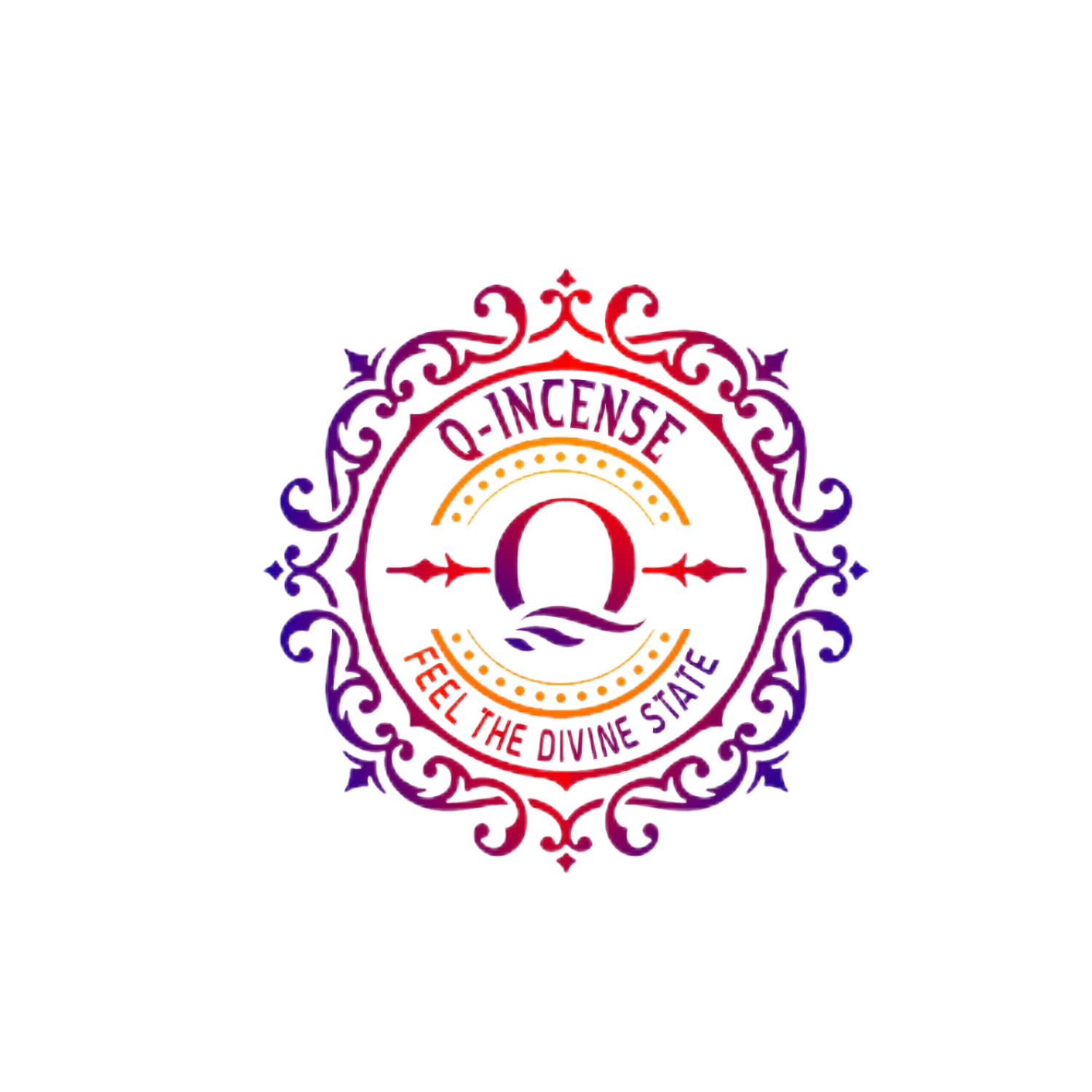
The use of incense dates back over 5,000 years. It's believed to have originated in ancient cultures like Egypt, China, India, and Mesopotamia. These early civilizations discovered the aromatic qualities of certain natural materials and began to use them in their religious and spiritual practices.


Incense held a multifaceted and revered role in ancient China, where it was woven into the tapestry of
both religious and medicinal practices. Here's a closer exploration of how incense was utilized in this
ancient civilization:
1. Religious Significance:
● Incense was deeply integrated into Chinese religious practices. Temples and ancestral shrines used
incense for rituals and ceremonies. The fragrant smoke was believed to serve as a bridge between the
earthly realm and the spirit world. It was thought to facilitate communication with ancestors and
spirits, and it played an integral part in connecting the living with the divine.
2. Temples and Ancestral Worship:
● Chinese temples, pagodas, and places of worship prominently featured the use of incense. Devotees
would light incense sticks or coils as offerings, seeking blessings, protection, and guidance from
deities. This practice of burning incense became an essential component of temple etiquette.
3. Spiritual Communication:
● Incense was seen as a means of spiritual communication. The fragrant plumes of smoke were believed to
carry messages, requests, and prayers to the spirit world. It was a way for individuals to seek divine
intervention, express gratitude, or connect with their ancestors.
4. Traditional Chinese Medicine
(TCM):
● Incense was not limited to religious use; it also found its place in traditional Chinese medicine
(TCM). Aromatic substances derived from incense ingredients were incorporated into medicinal remedies.
These substances were believed to have therapeutic properties, aiding in the treatment of various
ailments. The use of incense in TCM exemplified its dual role in both the spiritual and the practical
realms.
5. Medicinal Properties:
● Chinese herbalists explored the potential healing properties of incense ingredients. Certain herbs,
resins, and spices used in incense were believed to have medicinal benefits. For instance, they were
used to address respiratory issues, alleviate stress, or promote general well-being.
6. Cultural Legacy:
● The significance of incense in ancient China left a lasting cultural legacy. The practice of burning
incense continues in contemporary Chinese culture, particularly during significant events, festivals,
and ancestral worship. Incense remains a symbol of reverence, tradition, and spiritual connection in
Chinese society.
The history of incense in ancient China illustrates its profound role in fostering spiritual connections
and enhancing well-being. It embodies a harmonious blend of the spiritual and the practical, with
incense serving as a conduit for both religious devotion and therapeutic practices.
India boasts a rich and diverse history of incense use, deeply intertwined with Hindu rituals, spiritual
practices, and Ayurvedic medicine. The use of incense in India has spanned millennia, and it continues to be a
vital part of daily life and cultural traditions. Here's a closer look at the role of incense in ancient
India:
1. Religious and Spiritual
Significance:
● Incense is an integral component of Hindu rituals and ceremonies. It holds profound spiritual significance
and is considered a symbol of divine presence. The fragrant plumes of incense are believed to purify the
environment and create a sacred ambiance, inviting the divine into the rituals.
2. Hindu Rituals:
● Incense is used in various Hindu rituals and ceremonies, including aarti (the waving of incense and light
before deities), puja (worship), and yagna (sacrificial fire rituals). The fragrant smoke is seen as an
offering to the gods and an aid in meditation and communication with the divine.
3. Ayurvedic Medicine:
● In addition to its spiritual role, incense played a significant part in Ayurvedic medicine. Aromatic
substances derived from incense ingredients, such as herbs, spices, and resins, were employed for their
therapeutic properties. Incense-based remedies were used to address various health concerns and enhance
overall well-being.
4. Fragrant Blends:
● Indian incense is known for its fragrant blends, carefully crafted from a wide range of aromatic herbs,
spices, and resins. These blends are chosen for their aromatic qualities, as well as their symbolic and
therapeutic significance. Common ingredients include sandalwood, frankincense, myrrh, and a variety of
aromatic spices.
5. Daily Rituals:
● Incense has a place in daily life in India. Many families light incense daily as part of their morning or
evening rituals, creating a serene and contemplative atmosphere. The fragrance is believed to purify the home
and bring blessings to the household.
6. Cultural Continuity:
● The use of incense in India has continued throughout the centuries, preserving ancient traditions and
spiritual practices. It is deeply ingrained in the cultural fabric of the country, manifesting in both
religious ceremonies and personal moments of reflection and devotion.
7. Symbol of Serenity:
● Indian incense embodies the quest for serenity and spiritual connection. It is a means of achieving inner
peace, enhancing concentration, and elevating the senses. The aromatic plumes that rise from incense sticks or
cones are seen as a bridge between the earthly and the spiritual realms.
The history of incense in ancient India reflects a tapestry of tradition, spirituality, and holistic
well-being. It continues to be a cherished and enduring element of Indian culture, enhancing rituals,
ceremonies, and daily life with its fragrant and sacred essence.


Incense held a significant place in the religious and cultural practices of ancient Greece and Rome,
where it was not only used in rituals but also associated with luxury and opulence. Here's a closer look
at the role of incense in these ancient civilizations:
1. Religious Offerings:
● In both ancient Greece and Rome, incense was commonly used as an offering to the gods during religious
ceremonies and rituals. The fragrant smoke was believed to be pleasing to the deities and served as a
means of communication with the divine. Incense offerings were an essential part of temple worship and
sacrifices.
2. Temples and Rituals:
● Incense was a staple in the temples of Greece and Rome. Devotees would burn incense as part of their
religious practices, such as prayer, supplication, and the veneration of gods and goddesses. The
aromatic ambiance was thought to create a sacred space for connecting with the divine.
3. Luxury and Opulence:
● Incense was associated with luxury and opulence in both civilizations. Precious and exotic
ingredients, such as frankincense and myrrh, were highly valued and sought after. These aromatic
substances were imported from distant lands and used to create premium incense blends.
4. Aromatic Ingredients:
● Ancient Greek and Roman incense blends often featured a rich assortment of aromatic ingredients.
Frankincense, myrrh, cinnamon, and other spices were commonly used. The fragrant combinations were
created not only for their spiritual significance but also for their captivating scents.
5. Healing Properties:
● In addition to their use in religious ceremonies, some incense ingredients were believed to have
healing properties. The aromatic smoke was thought to have therapeutic effects, and certain incense
blends were used for medicinal purposes.
6. Cultural Significance:
● The use of incense in ancient Greece and Rome was deeply rooted in cultural practices and
traditions. It was seen as an essential part of daily life, and the scents of incense permeated
homes and public spaces.
7. Legacy:
● The legacy of incense in ancient Greece and Rome can still be observed in modern practices.
Incense continues to be used in various Christian, Catholic, and Orthodox religious ceremonies,
where it has inherited some of the traditions and symbolism from its ancient predecessors.
The use of incense in ancient Greece and Rome demonstrates the enduring appeal of fragrant
offerings in religious and cultural contexts. It serves as a testament to the lasting legacy of
incense as a means of connecting with the divine and enhancing the sensory experience.
The Middle Ages in Europe witnessed the widespread use of incense, particularly within the Christian Church.
During this period, the practice of using incense in religious rituals became formalized and deeply ingrained
in Christian worship. The use of censers to disperse fragrant smoke held great significance, and this practice
continues in some Christian denominations to this day. Here's a more detailed exploration of incense in
Medieval Europe:
1. Introduction to Incense:
● The Middle Ages marked a pivotal period for the integration of incense into Christian liturgy and rituals.
The use of incense in religious ceremonies became more structured and formalized during this time.
2. Religious Significance:
● Incense played a vital role in Christian religious practices during the Middle Ages. It was used to
symbolize various aspects of faith and worship. The fragrant smoke of incense was associated with the prayers
of the faithful ascending to heaven and represented the presence of the Holy Spirit.
3. Liturgical Use:
● The use of incense was particularly prominent during the celebration of the Mass, where it was employed to
purify the sacred space, the altar, and the Eucharistic elements. It also signified reverence and respect for
the presence of Christ in the Eucharist.
4. Censers:
● To disperse incense, specialized censers or thuribles were utilized. These censers were ornate vessels
designed to hold the burning incense. They were often suspended on chains or held by priests, who would swing
the censer to release the fragrant smoke.
5. Symbolic Significance:
● The use of incense had symbolic connotations in Christian worship. The rising smoke was seen as a
representation of prayers and praises ascending to heaven, creating a spiritual connection between the earthly
realm and the divine. It was also used to purify the liturgical space and to honor the sanctity of the
Christian rituals.
6. Continued Practice:
● The practice of using incense in Christian worship continues in various denominations today. The use of
incense can still be observed in Roman Catholic, Eastern Orthodox, and some Anglican liturgies, where it holds
spiritual and symbolic significance.
The Middle Ages saw the formalization and widespread use of incense within the Christian Church in Europe. The
aromatic smoke of incense became an integral part of religious ceremonies, emphasizing reverence,
sanctification, and a connection with the divine. This historical use of incense continues to enrich the
spiritual experience in certain Christian traditions to the present day.
7. Silk Road:
The Silk Road, a vast network of interconnected trade routes that facilitated commerce between the East and
the West, played a pivotal role in the exchange of spices, herbs, and incense. This exchange profoundly
influenced the development of incense recipes and techniques in various regions along the Silk Road, resulting
in a diverse tapestry of aromatic traditions. Here's a more detailed exploration of the impact of the Silk
Road on the world of incense:
1. The Silk Road's Significance:
● The Silk Road was an extensive system of trade routes that connected the Eastern and Western hemispheres. It
played a fundamental role in the exchange of goods, ideas, cultures, and technologies, enabling the flow of
products and knowledge across vast distances.
2. Exchange of Aromatic Materials:
● Aromatic materials, including spices, herbs, and incense ingredients, were among the commodities transported
along the Silk Road. These materials were highly sought after for their culinary, medicinal, and aromatic
properties.
3. Cross-Cultural Influences:
● As traders, merchants, and travelers moved along the Silk Road, they brought with them their regional
aromatic traditions and knowledge of incense-making. This exchange of ideas and ingredients resulted in the
cross-cultural influences and fusion of aromatic practices.
4. Development of Incense Recipes:
● The interaction between different cultures and the blending of aromatic traditions led to the development of
new incense recipes and techniques. These recipes often combined local ingredients with those acquired through
trade, resulting in unique and regionally distinct incense blends.
5. Regional Aromatic Traditions:
● Along the Silk Road, various regions developed their own distinctive aromatic traditions. For example, the
Middle East became known for its use of frankincense and myrrh, while India created intricate incense blends
using spices and resins. China and Southeast Asia also contributed their aromatic expertise.
6. Enriched Aromatic Heritage:
● The Silk Road played a crucial role in enriching the aromatic heritage of nations and cultures. It became a
melting pot of scents, where the fragrant practices of different regions converged and evolved.
7. Continuity of Exchange:
● The legacy of the Silk Road's influence on incense continues to this day. Many of the aromatic ingredients
and blending techniques that emerged from this exchange still shape the incense-making traditions in the
regions connected by the Silk Road.
The Silk Road's role in the exchange of spices, herbs, and incense fostered the development of a diverse and
globally influenced tapestry of aromatic traditions. It allowed for the cross-pollination of knowledge and
ingredients, resulting in a rich and interconnected world of incense-making that continues to thrive in
contemporary times.
8. Traditional Medicine:
In many cultures, incense has been traditionally believed to possess healing properties and has been used in
traditional medicine to address a wide range of ailments. Specific incense ingredients were thought to offer
medicinal benefits, which often included respiratory relief, relaxation, and various other therapeutic
uses.
Here's a more in-depth exploration of incense's role in traditional medicine:
1. Healing Traditions:
● Incense has been an integral part of healing traditions in numerous cultures across the world. It was not
only used for its aromatic qualities but also believed to have therapeutic effects on the mind and body.
2. Aromatherapy:
● The practice of using incense for therapeutic purposes is often referred to as aromatherapy. Aromatherapy
involves the inhalation of aromatic compounds from incense to promote physical and psychological well-being.
Different scents were associated with specific healing properties.
3. Respiratory Health:
● Many incense ingredients were believed to have respiratory benefits. For example, the inhalation of certain
fragrances was thought to help clear airways and ease breathing difficulties. This made incense a valuable
tool for managing respiratory issues.
4. Relaxation and Stress Relief:
● Incense was often used to create a calm and soothing ambiance, making it a valuable aid for relaxation and
stress relief. The inhalation of fragrant incense was believed to reduce anxiety and induce a sense of
tranquility.
5. Meditation and Spiritual
Practices:
● In many cultures, incense played a role in meditation and spiritual practices. The scents were thought to
aid in deepening one's focus and connection to the divine. Incense was used to set the mood for contemplative
and introspective activities.
6. Natural Ingredients:
● Traditional incense blends often consisted of natural ingredients, such as resins, herbs, spices, and
essential oils, which were believed to have medicinal properties. These ingredients were carefully selected
for their therapeutic benefits.
7. Modern Aromatherapy:
● The use of incense in traditional medicine has evolved into modern aromatherapy practices. Aromatherapists
use incense and essential oils for their therapeutic properties, with an emphasis on holistic well-being and
natural healing.
8. Cultural Variations:
● The specific uses and beliefs surrounding incense in traditional medicine varied from culture to culture.
Different regions had their own unique interpretations and applications of incense for healing.
9. Contemporary Applications:
● In contemporary times, incense is still used in alternative and complementary medicine, particularly in the
practice of aromatherapy. The aromatherapeutic benefits of incense continue to be explored and appreciated.
The use of incense in traditional medicine reflects the belief in the healing properties of aromatic
compounds. Whether used for respiratory relief, relaxation, or enhancing spiritual experiences, incense has
been a valuable component of holistic well-being in numerous cultures throughout history.


In the modern era, incense continues to hold a significant place in religious and spiritual ceremonies
worldwide. It has also found new roles in the realms of aromatherapy, meditation, and relaxation
practices. Incense is valued for its ability to create a soothing and meditative atmosphere, enhancing
well-being and promoting relaxation. Here's a more detailed exploration of incense's contemporary
significance:
1. Religious and Spiritual
Ceremonies:
● Incense remains a vital component of religious and spiritual ceremonies across various cultures and
religions. Its use is deeply ingrained in these practices and symbolizes purification, prayer, and
spiritual connection. The fragrant smoke is believed to carry prayers and offerings to the divine.
2. Aromatherapy:
● Aromatherapy, the therapeutic use of aromatic compounds, has embraced incense as a valuable tool for
promoting physical and psychological well-being. The inhalation of incense scents is believed to have
a range of benefits, from reducing stress and anxiety to improving mood and focus.
3. Meditation and Relaxation:
● Incense is frequently used in meditation and relaxation practices to create a serene and tranquil
environment. The soothing scents help individuals achieve a state of calm and deep focus. The act of
lighting incense can also serve as a mindfulness ritual.
4. Stress Reduction:
● The calming effects of incense scents make them effective for stress reduction. The inhalation
of specific fragrances can trigger relaxation responses, making incense a popular choice for those
seeking relief from the demands of modern life.
5. Enhancing Well-Being:
● Incense is employed to enhance overall well-being. It is believed to improve mental clarity,
boost positivity, and foster a sense of inner peace. This, in turn, can contribute to improved
emotional and mental health.
6. Contemporary Varieties:
● In the modern era, incense comes in a wide array of scents and forms. There are incense
sticks, cones, resins, and essential oils to cater to different preferences and practices.
Individuals can choose the scents that resonate most with their intentions and goals.
7. Holistic Living:
● The use of incense aligns with the principles of holistic living, emphasizing a balance
between the physical, mental, and spiritual aspects of well-being. It encourages individuals
to connect with nature and their inner selves.
8. Global Popularity:
● Incense's versatility and cultural adaptability have contributed to its global
popularity. It has transcended geographical and cultural boundaries to become a universal
symbol of spirituality and mindfulness.
9. Evolving Traditions:
● The use of incense has evolved to meet the changing needs and preferences of modern
practitioners. It continues to adapt to contemporary lifestyles while preserving its
timeless connection to tradition and spirituality.
In the modern era, incense serves as a bridge between tradition and contemporary
well-being practices. It remains a cherished tool for enhancing spiritual connection,
promoting relaxation, and fostering a sense of inner peace and balance in the midst of
our fast-paced lives.
Incense is available in various forms, each with its unique characteristics, and it's crafted from a wide
array of ingredients. These ingredients can include aromatic woods, resins, herbs, and essential oils. The
choice of ingredients significantly impacts the fragrance's qualities and the intended purpose of the incense.
Here's a detailed look at the varieties of incense and their associated ingredients:
1. Incense Sticks:
● Ingredients: Incense sticks are typically made from a combustible paste, which consists of a combination of
ingredients such as:
● Aromatic Woods: Woods like sandalwood, cedarwood, and agarwood are often used for their base scent and
ability to hold the incense together.
● Resins: Resins like frankincense, myrrh, and copal may be added to provide depth and complexity to the
fragrance.
● Herbs: Ground or powdered herbs, such as lavender, rosemary, or sage, can contribute herbal notes and
additional layers of scent.
● Essential Oils: These are often applied to the sticks for their intense and lasting fragrance.
2. Incense Cones:
● Ingredients: Incense cones share many ingredients with incense sticks, including aromatic woods, resins,
herbs, and essential oils. The key difference lies in the formulation, as the ingredients are mixed and shaped
into a cone, allowing for slower and more controlled burning.
3. Incense Resins:
● Ingredients: Incense resins are composed mainly of resinous substances obtained from trees, such as
frankincense and myrrh. These resins are often burned over hot charcoal, and their pure fragrances are highly
valued in spiritual and religious rituals.
4. Powdered Incense:
● Ingredients: Powdered incense, also known as loose incense, consists of a mixture of ingredients that can be
finely powdered or granulated. Ingredients can include aromatic woods, resins, herbs, spices, and essential
oils. This form allows for greater customization and blending to achieve specific scents.
5. Coil Incense:
● Ingredients: Coil incense is shaped into a spiral or coil form and is crafted from a paste that includes
aromatic woods, resins, herbs, and essential oils. The unique shape allows for slow, continuous burning and
long-lasting fragrance.
6. Tibetan Incense:
● Ingredients: Tibetan incense is renowned for its use of natural ingredients like juniper, cedar, and a wide
variety of herbs, as well as traditional Tibetan medicinal plants. These ingredients are often mixed with
butter and then hand-rolled.
7. Japanese Incense:
● Ingredients: Japanese incense is known for its minimalistic and pure scents, often derived from high-quality
sandalwood and aloeswood. It's created with meticulous attention to detail and craftsmanship.
8. Indian Incense:
● Ingredients: Indian incense is celebrated for its rich and complex blends of aromatic ingredients. It often
includes sandalwood, various resins, spices, and floral elements, creating a tapestry of fragrances for
different purposes and rituals.
9. Ayurvedic Incense:
● Ingredients: Ayurvedic incense draws from the principles of Ayurveda, the traditional Indian system of
medicine. It features a wide range of herbs and botanicals chosen for their therapeutic qualities, including
enhancing physical and mental well-being.
The choice of ingredients in incense production is an art that varies from culture to culture. These
ingredients are thoughtfully selected to create scents that align with specific intentions, whether for
relaxation, meditation, spiritual connection, or therapeutic purposes. The diversity of incense forms and
ingredients allows individuals to explore and experience a broad spectrum of fragrances and their associated
benefits.


Incense has transcended geographical and cultural boundaries to become a universal symbol of
spirituality, mindfulness, and personal well-being. Its rich history and enduring significance make it an
integral part of many religious, cultural, and personal rituals, connecting people to their spirituality
and traditions. Here's an exploration of incense's global appeal and its contemporary significance:
1. Universal Spirituality:
● Incense is an essential element in religious and spiritual practices worldwide. Whether in Hindu
temples, Buddhist monasteries, Christian churches, or Islamic mosques, incense is used to purify,
sanctify, and create a sacred atmosphere for worship and meditation. It serves as a bridge between
individuals and their spiritual beliefs, fostering a sense of reverence and connection.
2. Cross-Cultural Adoption:
● Incense's diverse range of scents and forms has led to its adoption in various cultural settings. It has
been integrated into traditions as diverse as the Chinese practice of ancestral worship, Native American
smudging rituals, and the use of frankincense and myrrh in Christmas celebrations.
3. Personal Rituals:
● Beyond religious and cultural contexts, incense plays a vital role in personal rituals. Many individuals
use incense in daily or periodic practices to create an ambiance of calm and tranquility. Lighting incense
can be a personal ritual that aids in relaxation, meditation, and self-reflection.
4. Aromatherapy and Well-Being:
● In the modern world, incense is embraced for its therapeutic and well-being benefits. Aromatherapy, a
practice that uses aromatic compounds to enhance physical and psychological well-being, often incorporates
incense. It is believed to reduce stress, improve mood, and aid in focus and relaxation.
5. Mindful Living:
● The use of incense aligns with principles of mindful living, emphasizing the importance of balance,
self-awareness, and spiritual connection. It encourages individuals to pause and engage with the present
moment, setting aside the fast-paced demands of modern life.
6. Holistic Wellness:
● Incense is seen as a holistic wellness tool, offering an avenue for individuals to nurture their
physical, mental, and spiritual health. It supports practices that promote balance, inner peace, and a
deeper sense of connection with nature and the universe.
7. Contemporary Adaptations:
● In the contemporary world, incense has evolved to meet the changing needs and preferences of
practitioners. It is offered in a variety of scents and forms to cater to individual tastes and
intentions. From incense sticks and cones to resins and essential oils, there are options for every
purpose.
8. Connection to Tradition:
● Despite modern adaptations, incense remains deeply rooted in tradition. Its continued use connects
individuals to their ancestral and cultural heritage, preserving the customs and beliefs passed down
through generations.
9. A Fragrant Legacy:
● The appeal of incense lies in its ability to transcend time and place. It carries the fragrant legacy of
countless generations, offering a link between the past, present, and future.
Today, incense continues to captivate people worldwide by serving as a conduit to spirituality,
mindfulness, and personal well-being. It is a testament to the enduring power of fragrance and its ability
to enrich the human experience across cultures and generations.